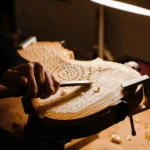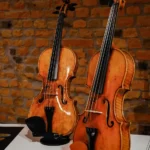Top 5 Classical Music Pieces of All Time
Back to BlogMusic has the ability to transcend time and the power to bring out the best feelings and emotions. This art is one of the most beautiful ways of expression, it is endless, and varies in so many genres, but the pieces are so exceptional that it doesn’t matter how old it is, we can’t get enough of it. Violins, cellos or any other, classical music pieces always amaze us in this way.
Musical instruments and composers were inspired by their surroundings, and recording and reproducing sounds have allowed music to exist as we know it. And now they are simply timeless.
Today, we brought 5 masterpieces of the classic world that are among the best pieces of all time! Of course, it is just a matter of taste and opinion.
Let’s go through the top 5 classical music pieces:
1 Amy Beach – Violin Sonata
Amy Marcy Beach, born in 1867, was an American composer known for her Piano Concerto (1900) and her Gaelic Symphony (1894), the first symphony by an American woman composer.
As a child, she composed simple melodies on the keyboard. At the age of 16, she gave her first public recital in Boston Music Hall.
Because of her dedication, she was well-respected in her lifetime. Sadly, since her death, her works have been neglected.
This one, The Violin Sonata is a beautiful example of her Romantic style; it packs passion and virtuosity into its three movements.
2 Bach – Partita No. 2 in D minor
Of course! Bach had to be here. Although Bach was admired by his contemporaries primarily as an outstanding harpsichordist, organist, and expert on organ building, he is now generally regarded as one of the greatest composers of all time. He is celebrated for having composed the Brandenburg Concertos, The Well-Tempered Clavier, the Mass in B Minor, and many other masterpieces of church and instrumental music.
Our pick is the Partita No.2 in D minor, one of his best-known works for solo violin. Like most unaccompanied compositions, it’s a challenge for the performer to sustain that virtuosic sound over the piece’s many demanding technical passages.
3 Tomaso Vitali – Chaconne in G minor
The Italian composer Tomaso Antonio Vitali is best known for this piece, the Chaconne in G minor for violin and continuo. His influence is pretty straightforward. The opening theme of this particular piece sounds so much like a human voice that it’s easy to see why early violinists thought the instrument should replicate the human voice.
Vitali earned his opus numbers 1 and 2 by publishing trio sonatas, chamber sonatas, and violin sonatas, among other works.
4 Beethoven – Violin Sonata No. 9 (‘Kreutzer’)
Widely regarded in his time as the greatest composer who ever lived, Ludwig van Beethoven dominated a period of musical history as no one else before or since–however much his interpreters may have preferred it otherwise. His art is rooted in the Classical traditions of composers Joseph Haydn and Mozart, whose work reaches out to encompass the new spirit of humanism and incipient nationalism expressed in the works of Goethe and Friedrich von Schiller.
Interestingly, in his composition we can find elements of popular music and folk music assimilated into the ballet music from his early cycle of symphonies, the “Waldstein” (1790). This tendency is especially apparent in several of his early accompanying songs and unison choruses, which were shared between other composers from the same time.
Even in the intimacy of violin and piano, Beethoven brings his usual range of emotions to life. However, here we can see him most clearly in his rawest light. Especially in this piece, Sonata No. 9 it is more apparent than usual.
5 Vivaldi – The Four Seasons
In 1705, Vivaldi’s earliest works were collected in a printed collection of his trio sonatas, and in 1709 his first set of concerti for violin and string orchestra (Opus 3, L’estro armonico) was published by the Amsterdam music-publishing firm of Estienne Roger. At The Four Seasons, he took great pains to translate the poetic lines themselves into the music on the page. In the middle section of Spring, where the goatherd sleeps, one can see his barking dog marked in the viola section.
Other similarly evoked events include the natural occurrences of Vivaldi’s piece. He separated each concerto into three movements, fast-slow-fast, and likewise, each linked sonnet into three sections.
According to the Classic FM post, the movements are also peppered with descriptive labels. The second movement of Spring is labelled ‘the barking dog’, and one section of Autumn is labelled ‘the drunks have fallen asleep.’
Beautiful as it can be, these really make our hearts beat! We become emotionally attached to our favorite songs, artists and albums. Music is powerful and it can even influence our feelings.









